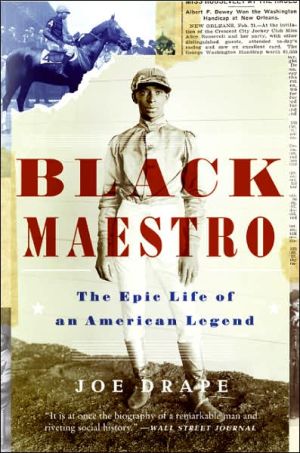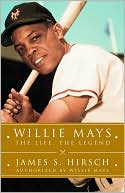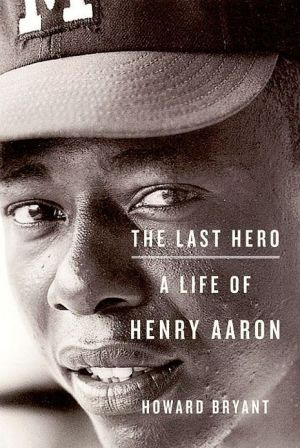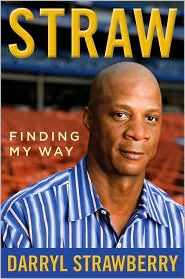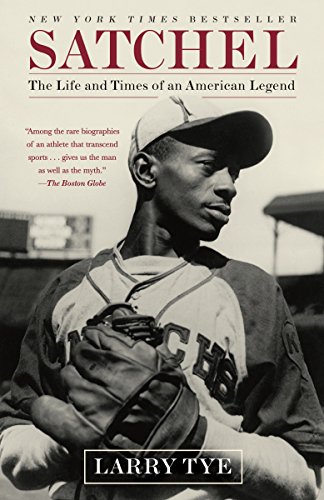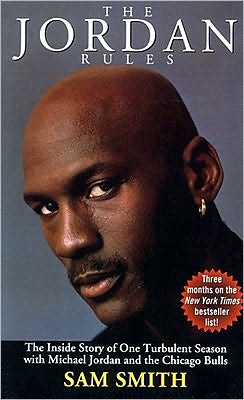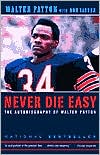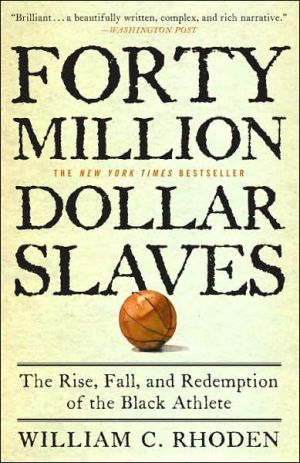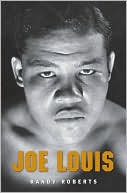Black Maestro: The Epic Life of an American Legend
In Black Maestro, Joe Drape meticulously brings to life the drama, adventures, romances, and heartbreaks of an unlikely participant in the greatest historical events of the twentieth century. It is a breathtaking narrative that takes you from pastoral Kentucky to Mob–controlled Chicago, from the horse country of Poland to the chaos of Red Square, and from freewheeling Paris to the hard–luck American South of the Depression. It is also a story that returns Jimmy Winkfield to his rightful place...
Search in google:
In Black Maestro, Joe Drape meticulously brings to life the drama, adventures, romances, and heartbreaks of an unlikely participant in the greatest historical events of the twentieth century. It is a breathtaking narrative that takes you from pastoral Kentucky to Mob-controlled Chicago, from the horse country of Poland to the chaos of Red Square, and from freewheeling Paris to the hard-luck American South of the Depression. It is also a story that returns Jimmy Winkfield to his rightful place as an original American hero. In 1919, at the age of thirty-seven, as Bolshevik cannon fire thundered above, the already epic life of Jimmy Winkfield turned into an odyssey. With a ragtag band of Russian nobility and Polish soldiers, the son of a black sharecropper from Chilesburg, Kentucky, was entrusted with saving more than 250 of the most royal but fragile thoroughbreds left in crumbling Csarist Russia. They trekked 1,100 miles from Odessa to Warsaw for nearly three months amid the bloodiest part of Russian Revolution, surviving gunfire and starvation. . . . Winkfield had arrived in the Land of the Czars fifteen years earlier, after Jim Crow laws ran him out of his beloved Kentucky bluegrass despite the fact that his preternatural skills as a jockey had twice taken him to the winners' circle of America's most famous race, the Kentucky Derby, in 1901 and 1902. The same combination of dignity and street smarts that had endeared Winkfield to outlaws such as Frank James and legendary gamblers such as Big Ed Corrigan and Pittsburgh Phil in early-twentieth-century America, however, made him the toast of the Russian Empire. Winkfield spoke Russian and Polish fluently, lived in Moscow's mostluxurious hotel, employed a white valet, and earned the nickname "Black Maestro" by winning the most prestigious horse races through eastern Europe. As World War I raged, Winkfield -- barely five feet tall and one hundred pounds -- waltzed across ballrooms alongside Czar Nicholas, seduced White Russian beauties, and was the trusted rider and friend for two of the richest oilmen in the world. While fate had dealt Winkfield an extraordinary hand by taking him from racism to Russia, it was hardly through with him. He delivered the thoroughbred horses safely to Warsaw and earned a revered place in Polish history, but at the cost of his family and fortune. Winkfield rebuilt his life in Paris, first as a jockey, then as a successful trainer, only to endure the death of a son and the tragic madness of the true love of his life. In 1941, after Nazi troops requisitioned his estate and stables in the French countryside, Winkfield returned to America, where his social status, as a black man, had hardly changed: he was a second-class citizen who could not walk through a front door. Jimmy Winkfield not only persevered but prospered by turning broken-down thoroughbreds into money-making racehorses on the same southern circuit that had chased him from America forty years earlier. Black Maestro is the incredible story of an ordinary man who lived a life beyond his dreams.Publishers WeeklyNew York Times writer Drape (The Race for the Triple Crown) illuminates a little-known figure in the history of American sports: Jimmy Winkfield, the last black jockey to win the Kentucky Derby. Like that of more well-known black performers Paul Robeson and Josephine Baker, Winkfield s successwas a mixed blessing: racism and injustice ultimately force Winkfield to flee his native country for Russia, where he witnesses the revolution and lands in Paris with other Russians. The youngest of 17 children in a Kentucky sharecropping family, Winkfield s passion for horses sets in early, and his slight stature bolsters his desire to be a jockey, where blacks and whites rubbed shoulders without cross words or a stinging backhand to upset the harmony. Black jockeys such as the legendary slave jockey Simon who helped drive General Andrew Jackson from the racing game and Isaac Murphy, who was so successful, he built himself a $10,000 house before the turn of the 20th century. While Drape s attempts at novel-esque narrative occasionally read cliche, this well-researched biography of Jimmy Winkfield and the larger chapter of America his life highlights is a valuable and entertaining read. 16 page b&w photo insert. (May) Copyright 2006 Reed Business Information.
Black Maestro\ The Epic Life of an American Legend \ \ By Joe Drape \ HarperCollins Publishers, Inc.\ Copyright ©2006 Joe Drape\ All right reserved.\ ISBN: 0060537299 \ \ \ Chapter One\ The Fence Runner\ \ Jimmy's classroom was the Bluegrass. His desk was any of the limestone and dark plank fences that he climbed on to while away the day. His field of study was concentrated: horses. George and Victoria Winkfield were surprised that their youngest boy remained small; after all, there were a couple of six-footers among their seventeen children. If there was ever a place for an undergrown boy to be dropped, even a black one, it was amid these gently rolling hills and a people who believed that horses were more than the fastest way to get them between two points or to pull a plow. Horses were partners who conjured up magic as well. Jimmy's classroom was gorgeous and the earth beneath it was a fount for healthy horses and a mother lode of wealth for their gentlemen breeders.\ The story goes that after Daniel Boone settled in Kentucky, he declared that "every man needs a wife, a gun and a good horse," which perhaps mutated into the Bluegrass proverb that "a good horse never stumbles and a good wife never grumbles." In fact, he introduced a bill to improve the breed of the horses at the territory's first legislative assembly, in 1775. The Virginians who followed Boone into theBluegrass had experience breeding thoroughbreds, long importing them to their plantations from England, where the wealthy and titled mated and matched the descendants of the Darley Arabian, Godolphin Arabian, and Byerly Turk stallions from which all thoroughbreds descend. England and the Bluegrass shared the same goal: creating a swifter, stronger horse. In the spring, bluish-purple buds carpeted the thousands of acres of Bluegrass and, with his legs dangling off a limestone wall, Jimmy could imagine pushing himself off and wading into an ocean. The Bluegrass was actually a vivid green tapestry of thin blades -- its origins are traceable to the Black Sea -- and anchored in dense sod by a root system that constantly regenerated itself. The explanation for how it came to these seven counties of central Kentucky was a guessing game worthy of a good tongue-twisting tavern debate: Did the Mennonites ousted from Russia import it here when they settled in Pennsylvania? Or did an Englishwoman who might have accompanied Boone here bring the seed from her native country, wrapped up snugly in the corner of her handkerchief? Or did an early settler, old Thomas Goff, unearth a section of sod from somewhere near the Blue Ridge Mountains and then plant it in Clark County, to watch it take off like the most beautiful weed in the world? Wherever it came from, everyone agreed that it tattooed central Kentucky with a little bit of perfection. "When God made the picturesque valleys of Southwest Virginia, He was just practicing for the Bluegrass country," a turn-of-the-century circuit judge once wrote.\ It was the core of limestone beneath the ground -- in places 25,000 feet thick -- that horse people were most grateful for. It meant greater concentrations of calcium and phosphorous, which meant that their horses grazing in its pastures received ample supplies of vitamins and minerals, enough to transform a 120-pound foal struggling to reach its feet into a 600-pound fence runner as a yearling and a half-ton racehorse with steel in its legs and wings on its feet by the time it was three years old.\ Jimmy was a fence runner himself as a young boy, racing along the stone walls, hoping to get a peek through one of the planks as the young colts and fillies darted in and out of the Bluegrass as if they knew they had something better to do but had not yet figured out what. He climbed the fence -- his school desk -- when the exercise riders mounted the older horses and walked them out in the field. The riders were like him, small and black, but older. He watched intently as they burrowed their tailbones into the horses' backs, finding their balance as the animals flexed their legs and sidestepped, adjusting to the weight on their backs. Jimmy watched as they pulled their knees up and braced either side of the horse and gripped it gently. When it came time to trot the racehorse, to limber up its legs, he watched them stand up in their stirrups nearly stiff-legged, their heads bobbing to an inaudible beat. When a trot gave way to a canter, the boys relaxed their legs, took up the slack in the reins, and let their rumps bump in rhythm to the muffled fall of their mounts' hooves. It sounded like heads hitting a pillow hard, one after another. The boys would show their strain when their horses reached a full gallop, tugging on the reins until the muscles in their forearms looked as if they were pulled straight through with knotted rope, easing a little lower in a crouch, a pigeon-toed grip pinning their knees to the horses' flanks. Only when they gave the horses their heads and let them run did they relax, sinking into that cannonball crouch, burying a nose in the horses' stringy manes, scrubbing the horses' necks as loose reins laced their fingers. The sound of the hooves hitting the ground played like a drum duet -- pftt, pftt, pftt, pfft -- picking up the tempo until, at full stride, the four-beat cadence dissolved into just two thunderous thuds pounding deep into that limestone, accompanied by the horses' snorts and heavy breaths, the boys' smooching sounds and chirping and whoops, and the Bluegrass singing right along.\ After Jimmy could no longer hear the horses, the ritual reversed itself as the boys slowed down in the distance. The strain in their arms was back as they galloped, their crouch once more coiled high to gear the horses down, and finally they stood tall in their stirrups. When they returned to the barn, the boys were again burrowed into their horses' backs. Each one of them was smiling.\ \ Continues... \ \ \ Excerpted from Black Maestro by Joe Drape Copyright ©2006 by Joe Drape. Excerpted by permission.\ All rights reserved. No part of this excerpt may be reproduced or reprinted without permission in writing from the publisher.\ Excerpts are provided by Dial-A-Book Inc. solely for the personal use of visitors to this web site. \ \
\ David Maraniss"Fascinating…[Black Maestro] is a taut, gripping account of one man’s courage amid humanity’s failings."\ \ \ \ \ Leigh Montville"The great racetrack search has been to find a worthy successor to Seabiscuit… Drape… has brought home the winner.…Terrific."\ \ \ Nick Kotz"Black Maestro represents investigative history at its finest. …A riveting, passionate portrayal of an unsung American hero."\ \ \ \ \ Louisville Magazine"A champion....[Black Maestro] makes racing shine brighter today through a brilliant reflection of a century past."\ \ \ \ \ Geoffrey C. Ward"Joe Drape has brought back to vivid life one of the biggest little men in the history of American sports."\ \ \ \ \ Publishers WeeklyNew York Times writer Drape (The Race for the Triple Crown) illuminates a little-known figure in the history of American sports: Jimmy Winkfield, the last black jockey to win the Kentucky Derby. Like that of more well-known black performers Paul Robeson and Josephine Baker, Winkfield s successwas a mixed blessing: racism and injustice ultimately force Winkfield to flee his native country for Russia, where he witnesses the revolution and lands in Paris with other Russians. The youngest of 17 children in a Kentucky sharecropping family, Winkfield s passion for horses sets in early, and his slight stature bolsters his desire to be a jockey, where blacks and whites rubbed shoulders without cross words or a stinging backhand to upset the harmony. Black jockeys such as the legendary slave jockey Simon who helped drive General Andrew Jackson from the racing game and Isaac Murphy, who was so successful, he built himself a $10,000 house before the turn of the 20th century. While Drape s attempts at novel-esque narrative occasionally read cliche, this well-researched biography of Jimmy Winkfield and the larger chapter of America his life highlights is a valuable and entertaining read. 16 page b&w photo insert. (May) Copyright 2006 Reed Business Information.\ \ \ \ \ Library JournalDrape (The Race for the Triple Crown), a sportswriter for the New York Times, has written an utterly fascinating biography of Jimmy Winkfield, the last African American to win the Kentucky Derby. Winkfield, hardly a household name, led a remarkable life. After winning his second consecutive derby in 1902, the Kentucky-born jockey moved to Russia, partly owing to increasing racial discrimination against blacks in the United States. In that country as well as Poland and Austria, he became an enormously successful jockey before World War I, earning the nickname "Black Maestro" and marrying a Russian aristocrat. During the Russian Revolution, he fled to Poland, then France, helping to rescue dozens of thoroughbred horses. He found fame in France, but the Nazis forced him to return to the United States, where, sadly, he became a stable boy in South Carolina. He lived his final days in France, helping his son oversee his own stable before dying in 1974 at the age of 91. An almost unbelievable story, splendidly told, this is highly recommended for all libraries.-Anthony O. Edmonds, Ball State Univ., Muncie, IN Copyright 2006 Reed Business Information.\ \ \ \ \ Kirkus ReviewsSeabiscuit meets Reds. Jimmy Winkfield's life was so rich in incident, set against such a vivid tapestry of world-shaking events, that his failure to emerge from his own story as a compelling character seems like a cruel irony. New York Times writer Drape (The Race for the Triple Crown, 2001) has marshaled impressive research and a clear passion for the history of horse racing to tell the remarkable story of Winkfield, who, born one of 17 children to poor black sharecroppers in 1882, went on to win the Kentucky Derby in two consecutive years, become the toast of Moscow (where he was dubbed "The Black Maestro"), fled the Russian Revolution and later, in Paris, the Nazis. The events of Winkfield's incredible history never fail to captivate-his participation in a drive to save the finest horses of Moscow from the advancing Red Army screams for the Hollywood treatment-but the man himself remains distant, distinguished only by his ambition and uncanny, almost telepathic ability to read horses. Winkfield paid dearly for his single-minded focus, repeatedly sacrificing his family for his zeal to win races; on the other hand, perhaps this tunnel vision accounts for the man's ability to persist in the face of racism and devastating reversals. Drape compensates for the essential opaqueness of his protagonist with authoritative accounts of the establishment of fabled racetracks such as Belmont and the Louisville Jockey Club, descriptions of Winkfield's colorful European patrons and a nuanced analysis of the social and cultural realities that the peripatetic jockey faced in America, Russia, Austria and France. But ultimately, Winkfield's story fails to satisfy the requirements of a hero's journey; inDrape's narrative, he seems, despite his great talent, to be a man without qualities, someone to whom things happen, a Zelig on horseback. An amazing story and an absorbing read for racing buffs, but those interested in the psychology of this singular athlete will be disappointed.\ \
